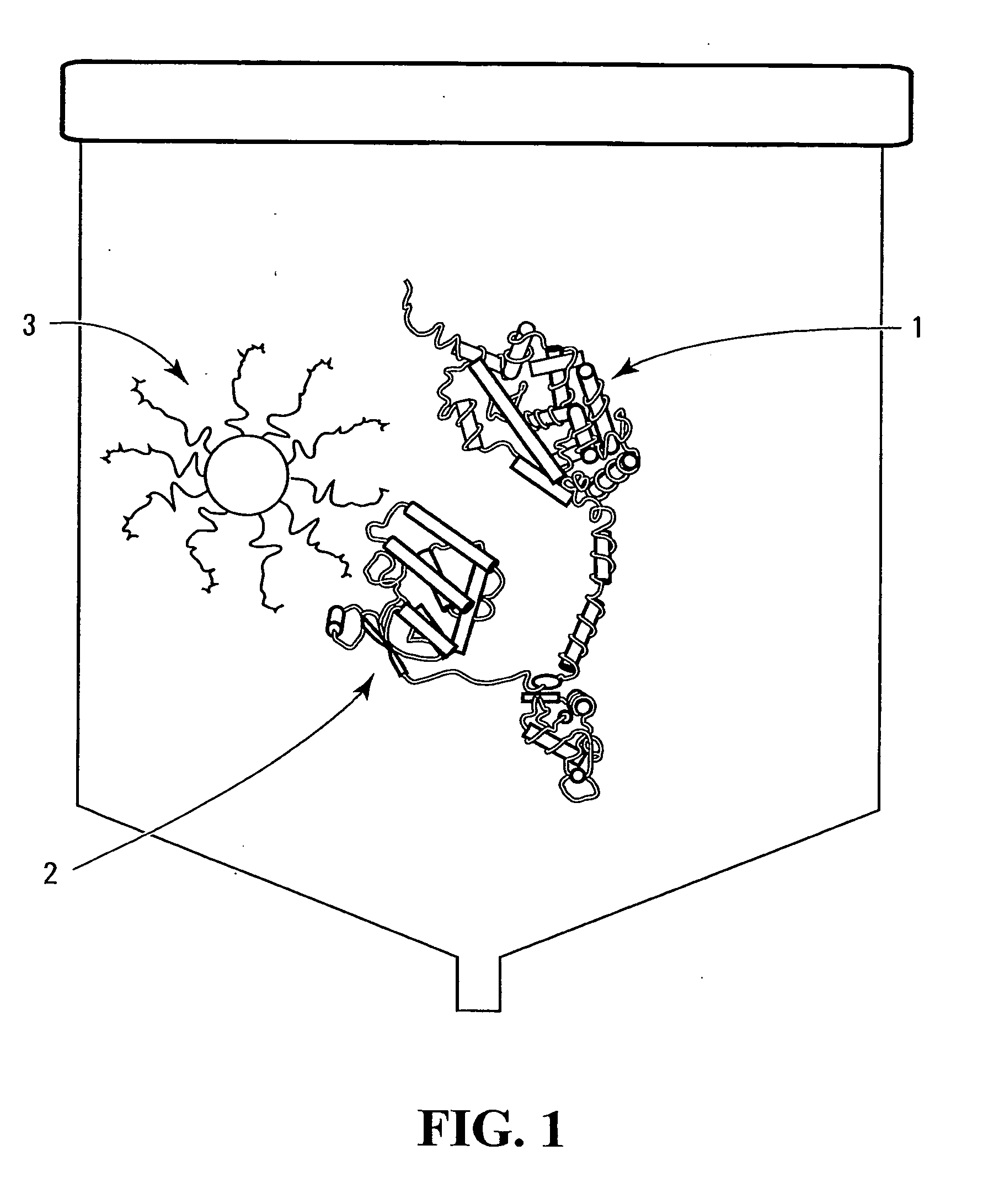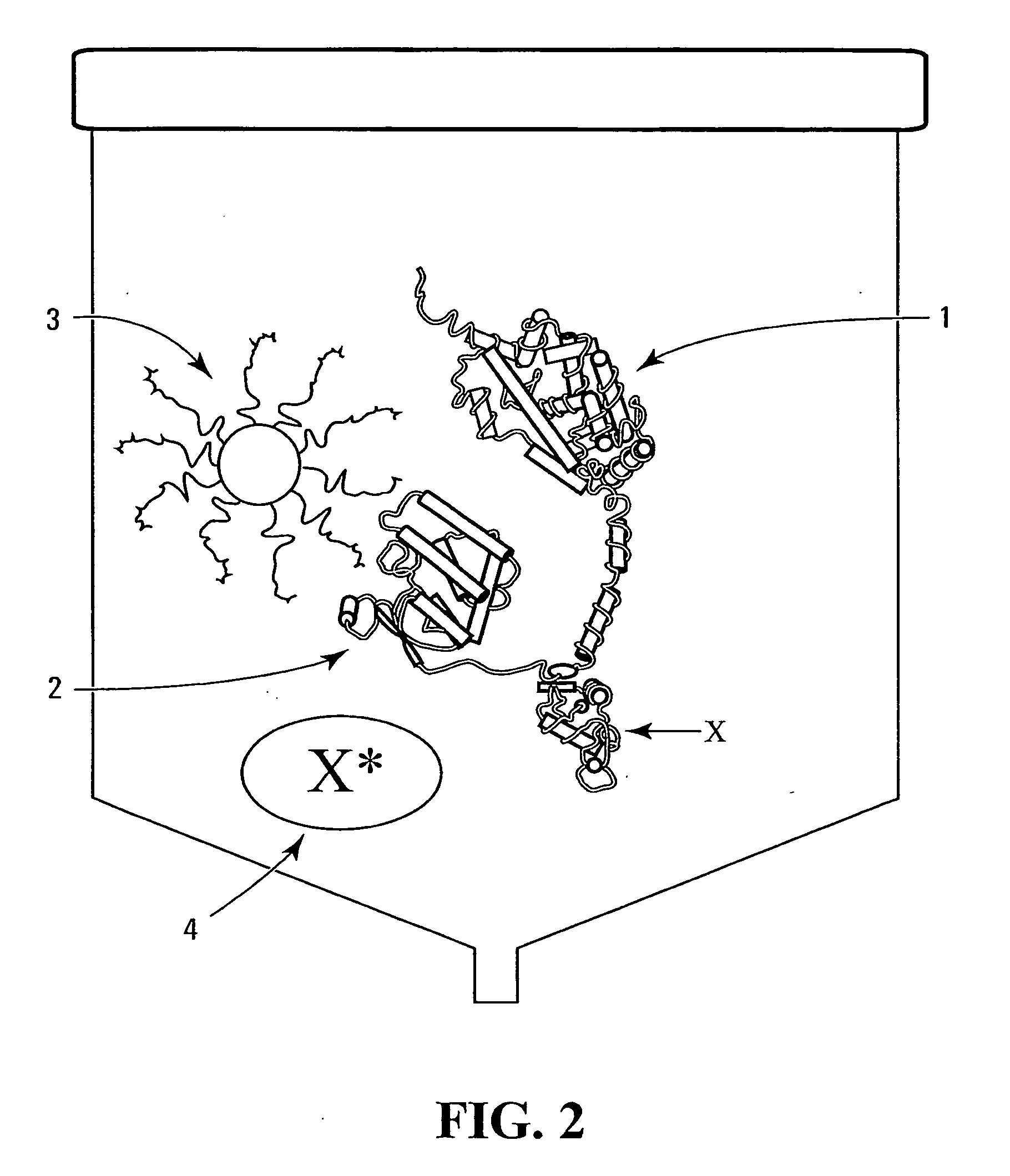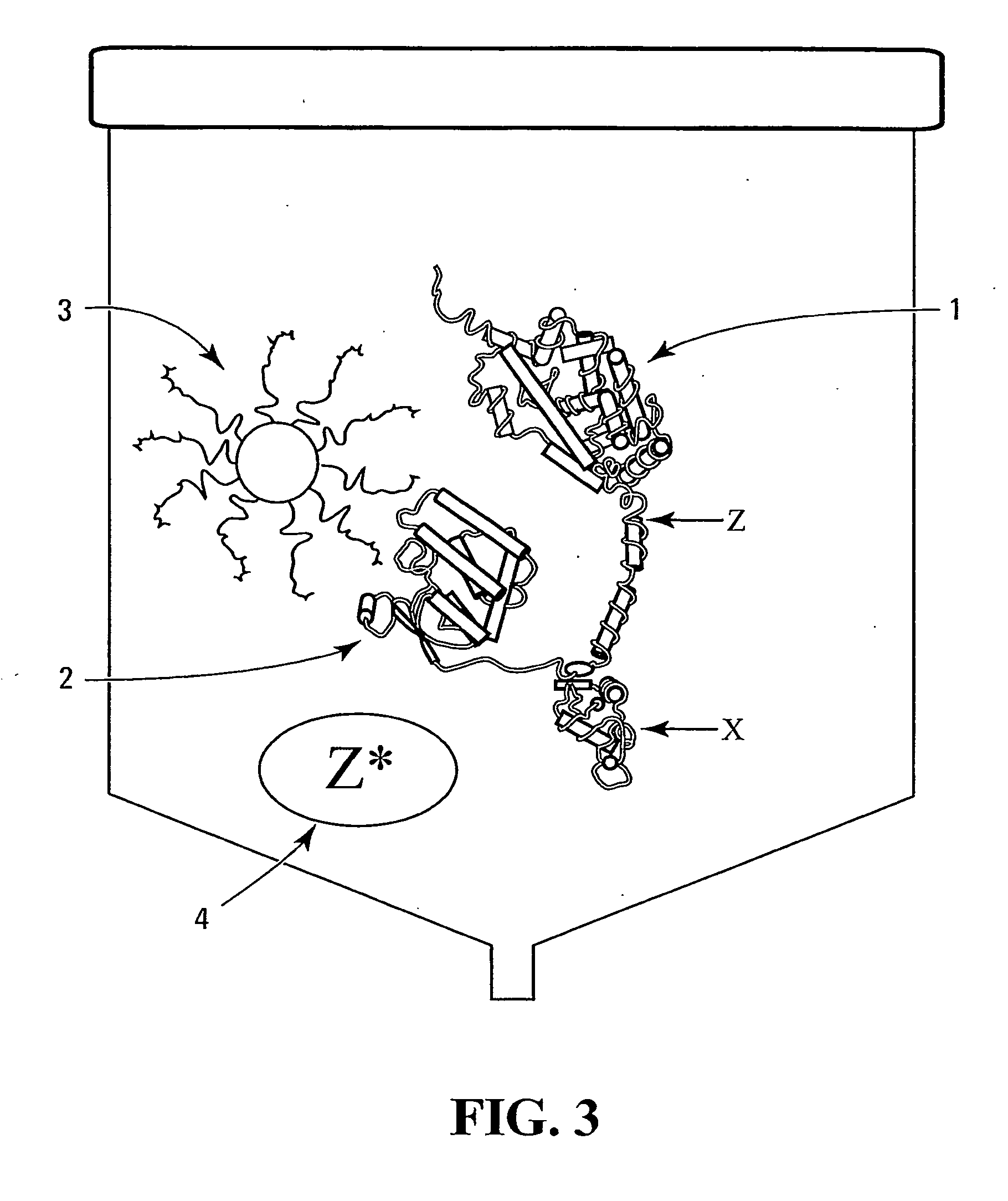Method and device
a technology of enzymatic modification and protein, applied in the field of chemical or enzymatic modification of proteins and polypeptides, can solve the problems of difficult identification and isolation of modified proteins from endogenous materials, dramatic reduction of the yield, definition or isolation of underrepresented or low-abundance proteins and their differential expression patterns
- Summary
- Abstract
- Description
- Claims
- Application Information
AI Technical Summary
Problems solved by technology
Method used
Image
Examples
example 1
[0223] In the present example a human eukaryotic cell receptor protein, recombinantly produced in a bacterial host as a fusion protein, was phosphorylated by a method according to the invention.
Methodological and Experimental Summary
Immobilization, Purification, Modification and On-Column Cleavage of a Receptor Protein
[0224] An over-expressed GST:: fusion protein is: affinity bound and immobilized on Glutathione Sepharose resin; post-translationally modified in-line on-column by phosphorylation reaction with PKC and / or MAPK enzymes; efficiently cleaved on-column and eluted as a homogenous modified product. The purity of the eluted proteins is evaluated by SDS-PAGE and mass spectrometry.
[0225] After selecting for conditions which produce high levels of expressed GST::fusion protein, the GST::fusion protein containing lysate is clarified by subsequent centrifugation steps at ˜70,000×g and at ˜300,000×g. Following the ultracentrifugation step, the clarified lysate containing GST:...
example 2
[0232] In this example, a human developmental regulatory protein was immobilized and purified as a polyhistidine tagged fusion protein and submitted to two independent phosphorylation modifications.
[0233] The target Protein is 58 kDa from Homo sapiens and is designated p58 in this study. Parental vector encodes for p58 gene product in pBluescript vector isolated from cDNA library.
[0234] Over-expression vector sub-cloned into N-terminal His-tag pQE80 (His6x::p58).
[0235] Post-translational phosphorylation modifications of p58 with Protein Kinase C (PKC) and / or Casein Kinase 2 (CK-II).
Sub-Cloning
[0236] The cDNA encoding for p58 was excised from the pBluescript vector and ligated into a pQE80 vector creating p58-Q80. The p58 sub-clone was transformed into an E. coli cloning cell line MC1061. The plasmid construct was amplified and purified with DNA minipreps and p58-Q80 plasmid was transformed into the over-expression E. coli cell line M15.
Culturing
[0237] Overnight cultures of ...
example 3
Purification of the HNF4α LBD using On-Column Cleavage Strategy and GSTPrep 16 / 10 Column
Bacterial Growth and Protein Expression.
[0274] Rat HNF4α ligand binding domain (LBD, aminoacids 133-368) was expressed as a fusion protein with GST using pGEX-6p expression plasmid and BL21 C+E. coli host. Four liters of LB medium supplemented with 5% sucrose, ampicilin (100 μg / ml) and IPTG (0.1 mM) were inoculated with overnight bacterial culture to 0.1 OD600nm. Bacteria were grown in 2.5 l Tunair flasks (Shelton Scientific, Shelton, Conn., USA) at 180 rpm, 18° C. for 17 hours. Cells were collected by centrifugation (Beckman J L A 8.1000, 20 min., 12,000 g) and washed in PBS buffer (140 mM NaCl, 2.7 mM KCl, 10 mM Na2HPO4, 1.8 mM KH2PO4 adjusted to pH 7.4).
Lysis and Lysate Clearance.
[0275] Bacterial pellet was resuspended in PBS supplemented with 1 mg / ml lysozyme, 10 U / ml DNase, 5 mM MgCl2. After 30 minutes of incubation on ice, bacteria were subjected to sonication (12 min total, pulse 1 ...
PUM
| Property | Measurement | Unit |
|---|---|---|
| temperature | aaaaa | aaaaa |
| temperature | aaaaa | aaaaa |
| temperature | aaaaa | aaaaa |
Abstract
Description
Claims
Application Information
 Login to View More
Login to View More - R&D
- Intellectual Property
- Life Sciences
- Materials
- Tech Scout
- Unparalleled Data Quality
- Higher Quality Content
- 60% Fewer Hallucinations
Browse by: Latest US Patents, China's latest patents, Technical Efficacy Thesaurus, Application Domain, Technology Topic, Popular Technical Reports.
© 2025 PatSnap. All rights reserved.Legal|Privacy policy|Modern Slavery Act Transparency Statement|Sitemap|About US| Contact US: help@patsnap.com



